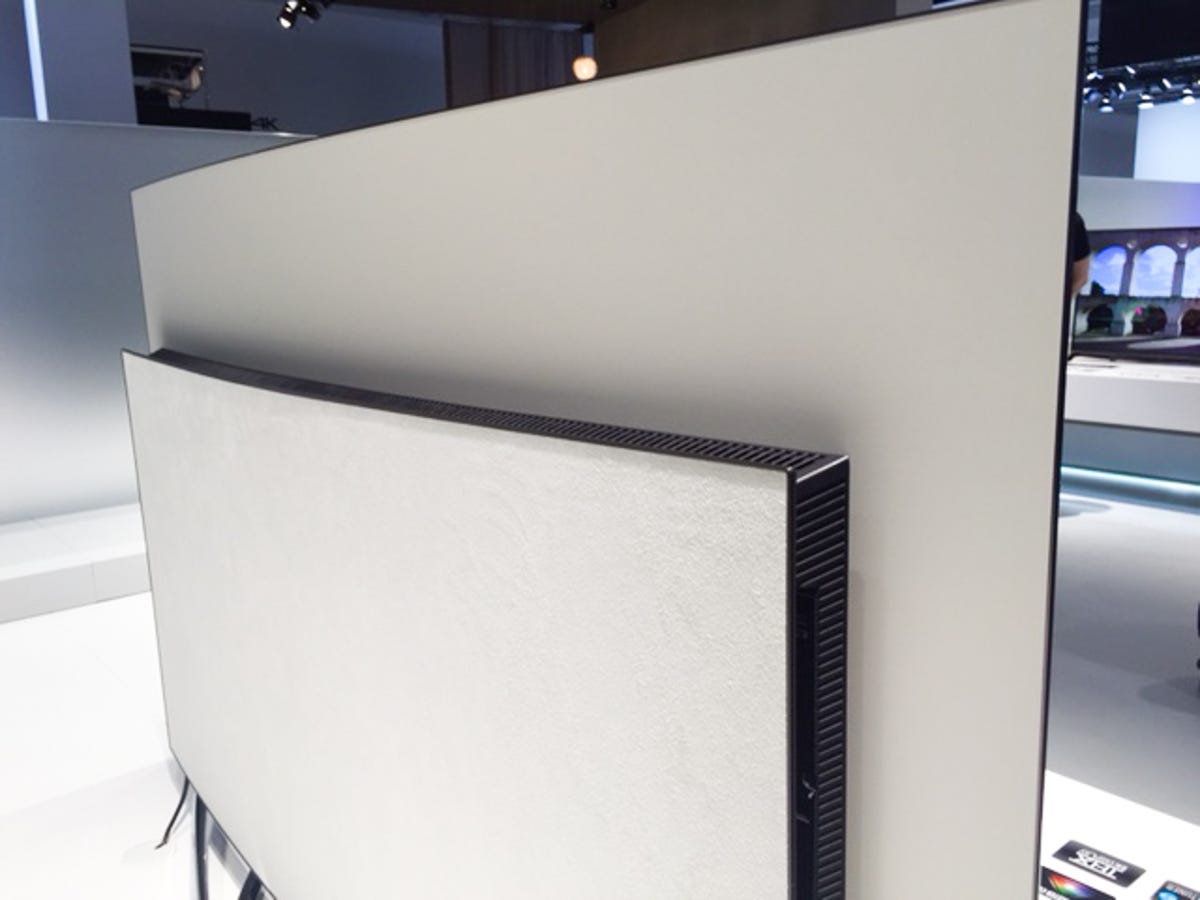 Enlarge Image
Enlarge ImageLuke Westaway/CNET
OLED TVs will get cheaper, Panasonic’s TV boss says, predicting that the self-illuminating television tech will be within reach of average consumers in a few years’ time.
“Probably within two or three years,” said Masahiro Shinada, director of Panasonic’s TV business division, speaking to CNET at the IFA trade show in Berlin, where the company just revealed its first commercial OLED TV set, the ultra high-definition 65-inch CZ950. “From 2017 or 2018, the OLED market will expand.”
OLED is an emerging TV technology that, unlike today’s regular LCD TVs, doesn’t require a backlight because the pixels in the screen can be individually switched on or off, resulting, for instance, in perfect blackness in parts of the screen where nothing is showing. OLED TVs can be very thin and light, and the technology produces the best picture quality we’ve ever seen . On the other hand, these panels are expensive and tough to build, so the tech isn’t favoured by every TV company. Samsung recently ditching OLED entirely in favour of a different technology known as quantum-dot.
Models from LG on the market now start in the neighborhood of $2,000 and range up quickly from there.
Price drop
That pricing problem is, Panasonic asserts, a temporary one.
“I’m very confident panel cost will go down,” says Shinada, arguing that growth in OLED for business purposes (when the tech is used in signs or retail displays) will help to lower prices on the consumer side too. The TV boss expects that if panel suppliers can improve their yield ratios — that is, the number of OLED panels produced that are fit to be put into TVs, rather than scrapped — prices will drop dramatically. “Last year, the panel suppliers’ yield was very, very low level” Shinada said. “But currently this ratio is now growing.”


Now playing:
Watch this:
What is OLED?
2:18
OLED wars
LG is currently the only other major TV maker betting on OLED, and it has a head start, having sold televisions using the technology for several years now. Panasonic does have form when it comes to self-illuminating systems, however, having championed plasma TV, the similarly self-illuminating display tech that was beloved by TV fanatics but lost a format war to today’s much more common LCD TVs.
“Panasonic developed PDP [plasma display panel],” Shinada said. “But unfortunately we stopped this business in 2013.” Now the company hopes some of the experience it gained during the plasma years will translate to OLED, and yield a picture that beats LG’s.
While the two companies use the same kind of panels, “the signal processor technology and the algorithm is completely different,” Shinada said. “We can achieve completely different picture quality.”
Their OLED TVs will have one thing in common — both companies are using white OLED, which means each pixel shines white light through a set of red, green and blue filters to create a pixel’s worth of colour. Another approach — one previously favoured by Samsung, uses actual red, green and blue subpixels, and no filters. Shinada says the decision to use a white OLED and filters is the better option for now because of cost reasons, even if the red-green-blue alternative “probably” would produce a better image. The company hasn’t decided what it will favour in the future, with Shinada reiterating, “Panel cost is the most important point.”
Trouble with the curve


Luke Westaway/CNET
OLED has been brewing in TVs or sitting pretty in smartphones for some time now, but one trend that’s cropped up in the last few years is gently curved TVs, championed primarily by Samsung and LG. Panasonic opted to put a curve on the 65CZ950, but it sounds like that bend won’t be around for long.
“The benefit for the customer is not so big,” Shinada said, commenting that the enthusiasm for curved TVs has cooled significantly since last year and that the company’s next flagship TV will “probably” go back to straight. Shinada says that LG will also be launching its TVs in both curved and flat versions, suggesting the customer response to non-straight sets has been tepid.
With Samsung and LG dominating the TV market, Panasonic has its work cut out and, having suffered through the decline of plasma, is taking a risk with OLED, which is still a long way from gaining traction with shoppers. The 65CZ950 will go on sale in Europe in October, so we won’t have long to wait to see how it fares.
For more of the best of IFA 2015, see CNET’s complete coverage.




